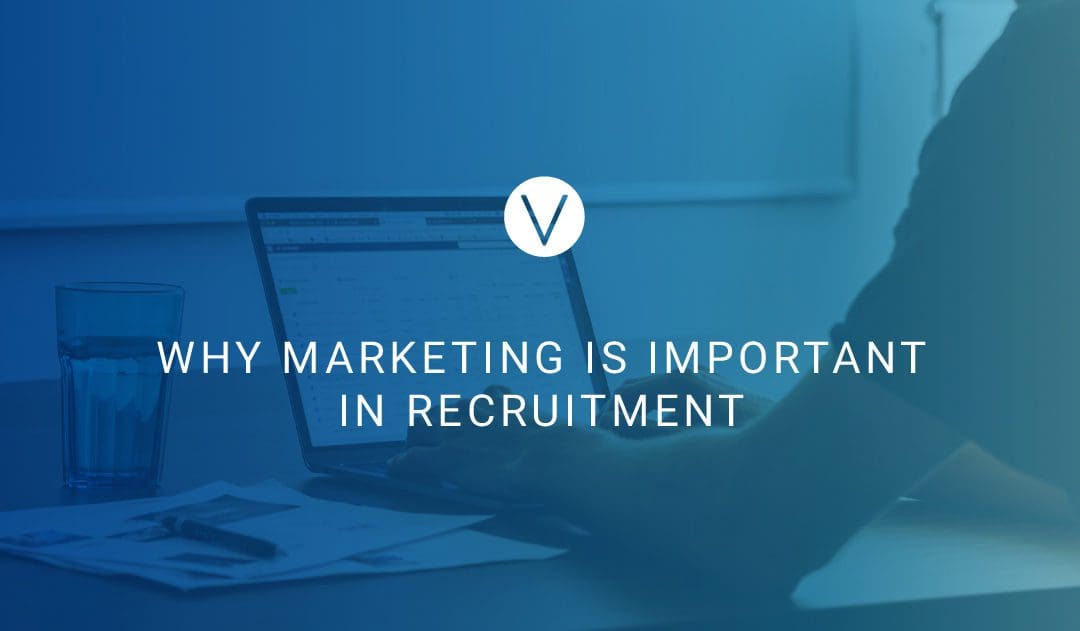 Recruitment marketing, at its most basic definition, uses inbound strategies and tactics to find, attract, engage and nurture talent before they apply for the job. This integration of traditional marketing tactics into recruitment efforts has not only proven to be effective in attracting top talent, but can also have long-lasting effects on your brand reputation for both potential customers and passive candidates alike.
Recruitment marketing, at its most basic definition, uses inbound strategies and tactics to find, attract, engage and nurture talent before they apply for the job. This integration of traditional marketing tactics into recruitment efforts has not only proven to be effective in attracting top talent, but can also have long-lasting effects on your brand reputation for both potential customers and passive candidates alike.
Marketing easily translates to and integrates with recruitment goals. Marketing’s main goal is to attract potential clients or customers to a brand in order to deliver a conversion (sale, business relationship, etc.) To do this, various tactics are utilized across a variety of communications channels, including content marketing, email marketing, social media, blogging, digital advertising, public relations and events, just to name a few. When it comes to recruitment, marketing goals are similar – to present stories, content and visuals that attract the best-of-best talent, with the conversion being application and ideally, hire.
Attract talent to more than the job.
A difference between recruitment marketing and recruiting is that marketing attracts talents to employers instead of just to the job. But in order to do so, a powerful employer brand needs to be established. According to Hootsuite, 52% of online brand discovery happens in public social feeds. Posting photos and videos of employees, company news and relevant industry content will help you build and strengthen an online presence. As followers begin to grow, you’ll have an established audience that has deep insight into your brand, which ideally will inspire them to apply if an open job is posted.
Target your reach.
Marketing stresses the importance of a target audience and using specific messaging to reach them. Recruitment marketing helps recruiters indicate top talent, best channels and what language to use. When creating and posting a job post, consider the ideal candidate and revise content accordingly. What can you post that would spark interest in an ideal fit? If the position is entry level but you’re looking for a go-getter and someone to grow and stay with the company, call that out not only within the job description, but when and where you post it.
Additionally, make sure your job posts are appropriately optimized for each platform it’s posted to. A post on Instagram should look and sound different than it does on Facebook or Linkedin, while a blog on your website can go into a detailed narrative to paint an even better picture of the job and opportunity. Although job boards are a go-to for job posts, don’t forget about all of the other communications vehicles at your fingertips.
Marketing is measurable.
One of the major advantages of recruitment marketing is that it is measurable. Especially when working with a limited budget, knowing the best channels to spend your recruitment dollars is extremely valuable. Using digital marketing methods provides access to analytics that can track engagement, reach, conversion rates and more. This data informs your approach so you can reevaluate your messaging, channels and overall strategy to better fit the candidates you are trying to reach.
Get opt-ins and remarket.
How often are you collecting potential interest from passive candidates, and then continuing to stay in touch with them? Take a page from the digital marketer’s playbook with continued communication and targeted remarketing efforts. Gallup found that 60% of millennials say they are open to a different job opportunity. With millennials being a major group of the current job force, this leaves a lot of potentials that can be tapped into. Sometimes it just takes a little extra encouragement to get talent to leave their current jobs. Make sure you have a place on your website and careers page for opt-ins where passive seekers can receive updates from the HR department. While they might not be quite ready to make the leap, continuing to stay in touch with them just might present the right opportunity and the right time down the line.
In addition to sending them news on job openings, make sure you include staff highlights, company achievements or other “articles” that can provide insight into what it could be like to work for you.
It’s cost-effective.
In the long run, using marketing in recruitment is a cost-effective strategy. Posting to job boards without a complementary plan in place can waste your budget and result in quantity, not quality. It’s important to have a diversified arsenal of marketing tactics all working together toward the same goal. Your ideal candidate may not be perusing job boards, but they are following you on social media. Or maybe they read about a community initiative in their favorite online publication. It’s important to view recruitment comprehensively, maintaining a strong brand message throughout each and every job post.
Integrating marketing strategies and techniques into your recruitment efforts can help to get your quality candidates, faster.

